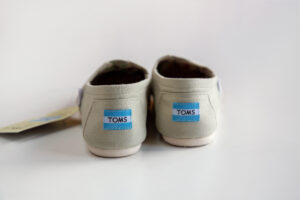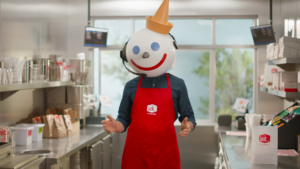A powerful brand is one that positively impacts cultures, communities, and individuals. Here are ten reasons that brands should leverage storytelling to do just that.

1. To demonstrate humanity. A brand is not. . . well. . . human. The people who make up the brand, though, are. Telling stories about the people behind a brand — their values, their aspirations, their vision for the future — compels customers to connect with the company on a personal level. For example, when TOMS shoes shared the story of their “One for One” program, where they donate a pair of shoes to a child in need for every pair purchased, customers connected to that value charity, kindness, and compassion. They see themselves in the company’s mission and values, and the purchase transcends the transactional — it becomes identity in action.

2. To connect emotionally. Stories are about empathy. A good story, well-told, lays out an emotional experience, and the audience feels seen. The empathy blots out loneliness, encouraging fellowship, community, and an overall sense of belonging to something bigger. Coca-Cola’s “Share a Coke” campaign invited customers to share a coke, a suggestion that inspired togetherness, just a couple of people slowing down to refresh, enjoy the moment, and connect on a deeper level. The brand connected itself to all that positive emotion, and just as Maya Angelou said, “…people will never forget how you made them feel.”

3. To differentiate. We’ve been telling stories since the beginning, and there’s no sign of storytelling coming to an end. We love great storytellers, even if they’re telling familiar stories because their point of view, their values, and their authenticity breathe life into stories and make them feel new and different. A unique brand story can do the same, helping a company stand out in a crowded market. Patagonia, for instance, crafts its story around its commitment to sustainable practices and environmental activism, championing volunteerism and education, all of which renders their brand in higher resolution.
4. To clarify values. A brand’s values and mission statement are declarative in nature, and telling just isn’t as effective as showing. Storytelling shows an audience what brand values, it externalizes and dramatizes it, allowing customers to see their values in the brand story. Ben & Jerry’s ice cream has been in the vanguard of that movements a good long time. They’re enthusiastic about telling the story of using high-quality, responsibly sourced ingredients and being a socially responsible company. Consumers in alignment with those values prioritize a brand like Ben and Jerry’s to match their sustainable and socially responsible consumption.

5. To put school in session. Any good teacher will tell you that storytelling is a priceless tool for education. When brands tell a story that educates customers about a product or service, the likelihood of conversion increases. When Tesla’s brand story relayed their mission to accelerate transition to sustainable energy, its customers grew knowledgeable about the benefits of electric cars and sustainable industry, all of which contributed to the ubiquity of the Tesla brand.
6. To build trust. Brands who tell their stories, warts and all — successes and failures — create a trusting bond with the audience. When Domino’s Pizza shared the process it went through to assess their product and then pivot to improve, everyone bought in or, more accurately, everyone bought a pizza. Brands that reveal their vulnerabilities with honesty and authenticity lay a strong foundation of trust that customers feel deeply.

7. To bring the people together. A brand story can build a sense of community. After all, communities are about shared narrative. People who live in New York City have a literal but also a narrative common ground. Lululemon knows this and focuses much of their storytelling on community and in-store events. When their customers bump into each other, mix, and connect, they do so around the brand, and the brand becomes part of their shared narrative, a communal adhesive that binds together people, products, and experiences.
8. To share and share alike. A well executed brand story is easy to share and easy to reproduce in quick conversation. There’s a beginning, middle, and end, or put another way, a problem, escalation, and resolution. We all know the structure, and it makes it easy to recall and share. Old Spice does this well with “The Man Your Man Could Smell Like” campaign. The problem? Your man doesn’t smell like the actor. The escalation? Your man uses lady-scented body wash. The resolution? Old Spice. Throw in some fun spectacle, and it’s essentially an easily shareable joke, a fun little story that spreads like wildfire.
9. To recruit advocates. If your audience feels like a part of your story, they will advocate for your brand. They’ll champion it to friends and family, plug it into conversations with coworkers, and even relay details to perfect strangers. Apple devotees who’ve connected with Apple’s stories about icons who Think Different are all too enthusiastic to espouse Apple’s benefits.

10. To create memories. Our lives are one continuous narrative, and we organize it in our minds in the form of stories. By crafting brand stories, you’re meeting your audience where they are. You’re making it easy for them to remember your brand, your values, your products and services. Jack in the Box has told droves of stories with their leading man, Jack, at the center. He’s a memorable character, funny, charming, passionate, but most importantly, memorable.